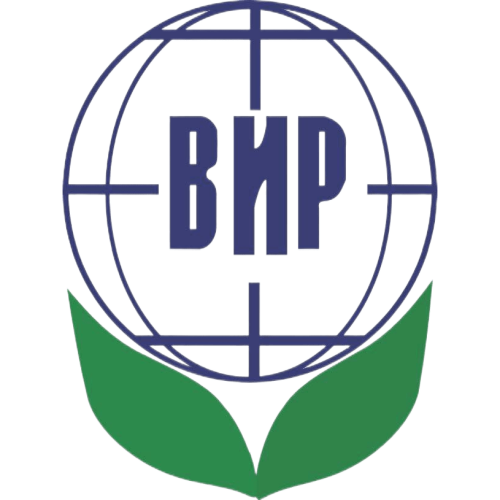Plant Stress Resistance Laboratory
Publications
26
Citations
143
h-index
7
Authorization required.
We study the molecular mechanisms of resistance of cultivated plants to adverse environmental factors. The work is carried out in two main directions: search for genes determining plant resistance to abiotic and biotic stresses and editing the genome of cultivated plants in order to increase their stress resistance. The research work is supported by grants.
We are ready to accept undergraduate and graduate students who are enthusiastic about scientific work and want to learn modern methods of genetic engineering and molecular biology into our team. You can gain experience in the laboratory, make a good-level thesis and present it at international conferences.
- Genomic editing
- CRISPR/Cas9-mediated editing of plant genomes
- Agrobacterial transformation of plants
- PCR
- Real-time PCR (qPCR)
- Obtaining bacterial and eukaryotic vectors using genetically engineered approaches
- Creation of genetically engineered structures for the expression of target proteins
- Work with protein-protein and DNA-protein complexes, including affinity assessment, identification of interaction sites between proteins, determination of protein binding site on DNA

Vasily Taranov
Head of Laboratory

Aleksey Babakov
Principal researcher

Marina Lebedeva
Senior Researcher

Veronika Nikanorkina
PhD student

Oksana Razhina
PhD student

Aleksandr Antipov
PhD student

Polina Kozenkova
Research assistant

Polina Razhina
Research assistant
Research directions
Editing agricultural crops
+
Despite the complexity of the molecular interaction between a plant and a pathogenic microorganism, in some cases it has been shown that a small change in the structure of a single plant gene can have a decisive effect on the resistance of a plant to infection. We are searching for plant genes of key importance for plant-microbial interaction and their targeted modification using CRISPR/Cas9 genomic editing technology in order to create cultivated plants resistant to the most relevant pathogens. In cooperation with other laboratories and research centers, work is underway to develop effective protocols for editing crop genomes, as well as the use of genomic editing methods to obtain forms of cultivated plants with an improved set of economically valuable traits.
Potato Y virus
+
Viral diseases are a big problem when growing potatoes, as they are propagated vegetatively and the viral load increases from generation to generation. Some of them, for example, potato virus Y (PVY, potato virus Y) is able to reduce yields by up to 80%. The most promising way to combat viruses is to create and grow resistant varieties. The virus uses proteins from its host plant to maintain its life cycle. One of these proteins is the translation initiation factor eIF4E. Normally, it interacts with the cap structure on the plant's mRNA and triggers translation. The Y virus recruits the host's eIF4E to translate its proteins by binding to factors using the VPg protein. In some Nightshades (pepper, tomato, tobacco), there are variants of eIF4E factors that are able to interact with the cap on mRNA, but not bind to VPg. It has been shown that one amino acid substitution in the factor may be sufficient to disrupt interaction with VPg. No such stability mechanism has been found in cultivated potatoes. Most likely, because potatoes are tetraploid, and for such resistance to occur, it is necessary that all forms of eIF4E factors in the plant do not interact with VPg. It is very difficult to create such a form of potato with the help of breeding. However, modern genome editing systems allow you to make changes to all alleles at once, including replacing one specific nucleotide. Together with the laboratory of Structural studies of the translation apparatus of the Protein Institute of the Russian Academy of Sciences, a model of the eIF4E-VPg complex was created for the first time, which is in good agreement with experimental data. Mutant variants of potato eIF4E have been created that do not interact with the VPg of the Y virus, but are able to initiate mRNA translation. It is planned to create potato plants with these mutant eIF4E variants and evaluate the resistance of these plants to PVY, as well as design and create new mutations that will disrupt the interaction of the factor with VPg, but will not affect the binding to the cap structure.
Vascular bacteriosis of cabbage
+
The bacterium Xanthomonas campestris pv. campestris (Csf) is the causative agent of vascular bacteriosis of cabbage, the most harmful disease of this crop. The main determinants of the pathogenicity of various bacteria of the genus Xanthomonas are TAL effectors, but until recently they remained poorly understood for Xcc. When infected, bacteria deliver TAL proteins to plant cells, where they specifically bind to promoters of certain genes, increasing their expression. As a result, the susceptibility of the plant increases. We have discovered a gene for a highly conservative TAL effector in several Xcc strains. The nucleotide sequence of the corresponding gene was established using high-performance sequencing of the third generation. Using a number of bioinformatic approaches, we predicted the DNA sequence to which the TAL effector specifically binds, and predicted its target in the genome of the host plant - the transcription initiation factor ERF121. The fact that the TAL effector regulates the expression of the EDR121 gene has been confirmed experimentally by us. Apparently, activation of ERF121 by the TAL effector leads to a violation of the regulation of the plant's protective response. Knowledge of the molecular mechanisms of susceptibility makes it possible to identify promising target genes for genomic editing in order to obtain forms of cabbage resistant to vascular bacteriosis. Xanthomonas campestris pv. campestris, the causative agent of vascular cruciferous bacteriosis, activates the transcription factor ERF121 in Brassica oleracea using a conservative TAL effector.
CSD proteins
+
The cold shock domain is one of the most conservative domains found in proteins from various organisms from bacteria to humans. Proteins with a cold shock domain are involved in the development of organisms and their adaptation to adverse abiotic environmental factors.
CSD proteins of plants belong to RNA-binding proteins. In bacteria, CSDP is critically necessary for cell survival at low temperatures.
CSDP has also been found in most eukaryotic organisms. In animals, CSDPS perform important functions in regulating cell differentiation.
However, in plants, the regulation of gene expression by RNA-binding proteins has been studied very poorly. In particular, the molecular mechanism of functioning of CSD proteins in plants remains virtually unknown.
The genome of the Arabidopsis thaliana model plant contains 4 genes encoding proteins with a cold shock domain, AtCSDP1-4. To study the functions of these proteins, we use the reverse genetics approach, which consists in obtaining plants with knockout mutations for the genes of interest and studying their phenotype. CRISPR/Cas9 technology is used to introduce knockout mutations into genes. To date, plants with knockout mutations in individual AtCSDP1-4 genes have been created and work is underway to create plants containing knockout mutations in two or four genes at once.
Publications and patents
Found
Nothing found, try to update filter.
2023
—
2025
| Лебедева Марина Валерьевна
2021
—
2024
| Злобин Николай Евгеньевич
Lab address
Москваа, Тимирязевская ул., 42
Authorization required.










